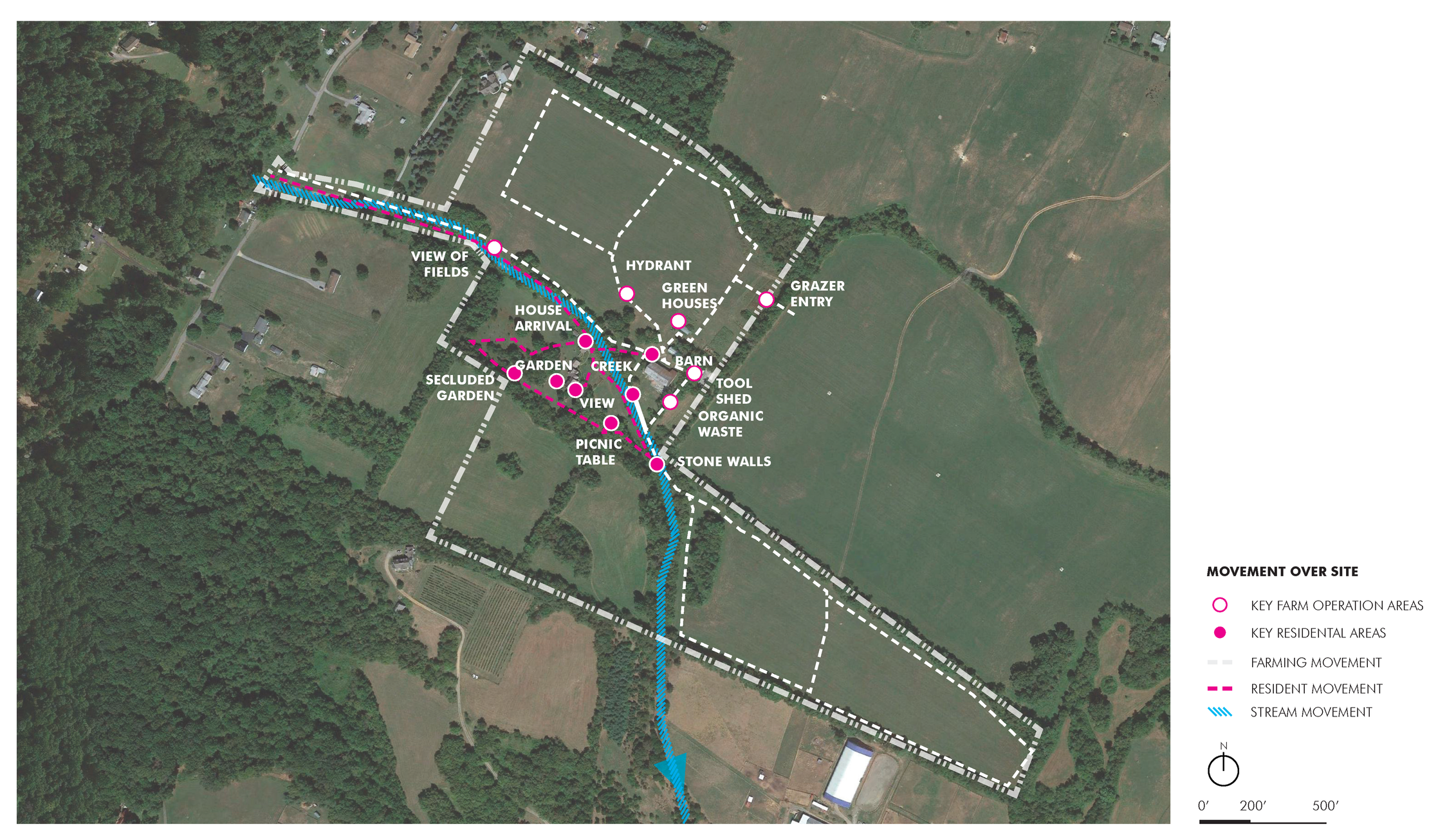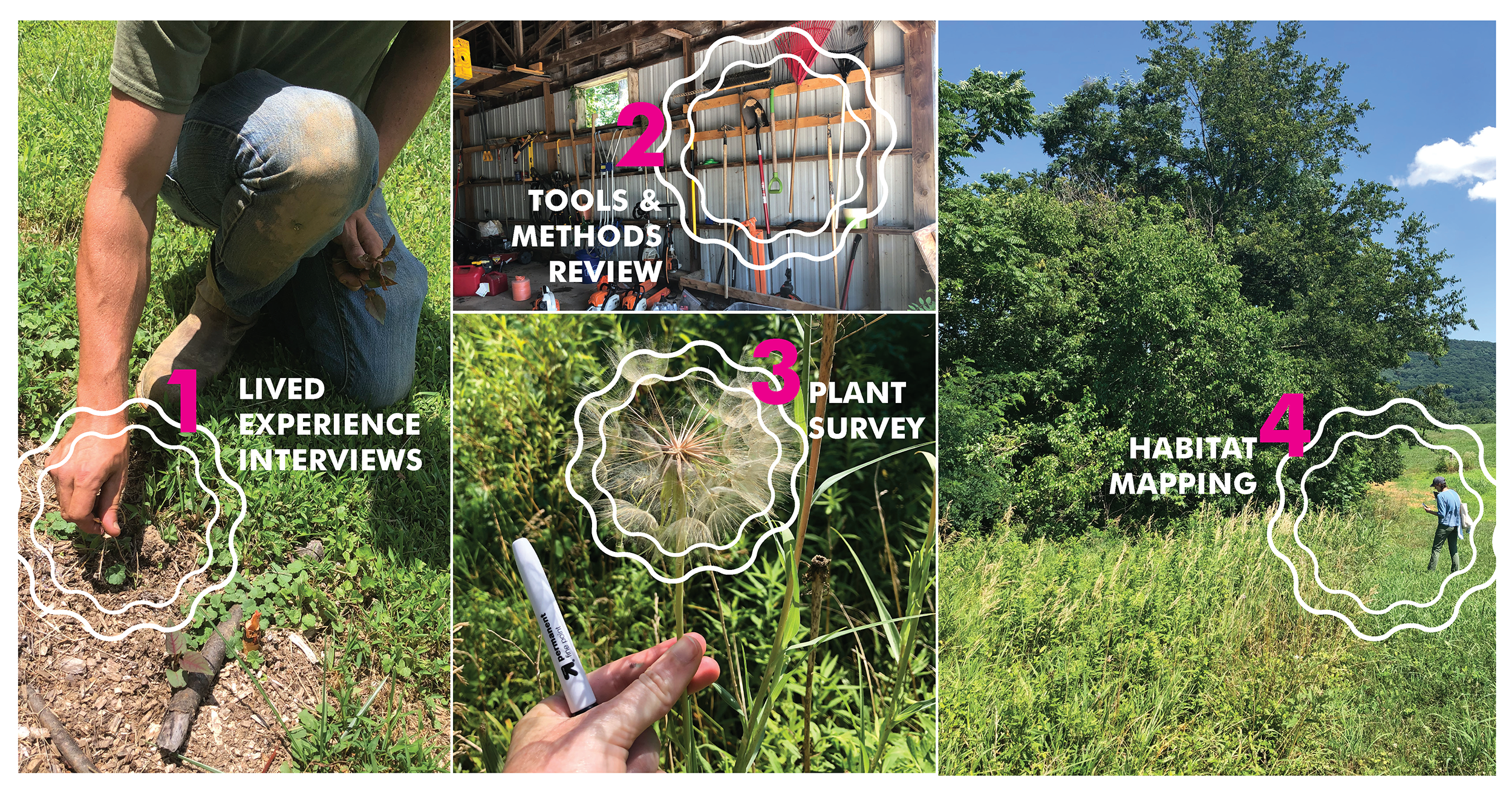
Plant Partners: A Site-Specific Approach to Managing Invasive Plants
Learn about a regenerative invasive plant management methodology that protects ecology, restores native biodiversity, and preserves cultural and environmental identity.
As we walked along the property, a stunning farm between the Blue Ridge and Elk Mountain in rural western Maryland, our guide took us around the back of the hoop house. There, he pointed out a plant, elegantly pointed with crimson petioles, that made us peel our eyes from the rolling hills toward a lone, ragged stem. This was our first glimpse of the threat to this seemingly idyllic landscape.
The Japanese knotweed we were hovering near was contained to one spot on the farm. But it is an infamously invasive plant. It would be the first of several plant invaders—garlic mustard, multiflora rose, tree of heaven, Japanese stiltgrass and others, we would find during our assessment of the property.
Our work on the farm began as a site-design project, responding to our client’s desire to adapt the existing farm and residence to a vineyard-like agrotourism experience, but for hemp instead of grapes. Because of the client’s interest in regenerative processes, our work expanded from an aesthetic and experiential exercise to one that also addressed the processes and living systems of the farm more fully.
Why working with plant systems matters.
Simply put, invasive plant species can negatively affect soil and water conditions and stunt or altogether eliminate desirable plant species that people and animals depend on. This can lead to an ecological chain reaction. First, native plant species get outcompeted by introduced plants that out-grow, out-spread or out-shade native species. Over time, systemic impacts, like altered soil chemistry, shifted hydrology and intensified fire regimes (when certain plants act as tinder), tip plant habitats out of their original balance. As native plant communities become more fragmented by invaded zones, genetic exchange sputters and populations lose resiliency.
This impact goes beyond plants. As native plants recede, nesting and feeding places for birds and other animals are impacted. Pollinators lose the native flowering plants from which they have coevolved to feed. Soil microbe populations collapse or shift, reducing carbon sequestration and soil quality.
Beyond ecology, our cultural relationship with place is also altered by invasive species. When we lose plants and processes, we fall into biocultural homogenization (losing a sense of place and meaning), a “shifting baseline” of collective memory (a gradual forgetting of what once existed), and, in some cases, a loss of traditional craft and foodways. Our cues become scrambled, and the site risks losing its unique identity.
What we did to address site-processes ecologically.
At Acknowledge Farms, MKSK developed an Invasive Plant Management Manual focused on site-specific, ecologically informed and temporally sensitive Best Management Practices to address invasive plant species. The manual uses a holistic approach that features prevention, early detection (through mapping and ID sheets), prioritization, treatment, monitoring and education.
>> WHAT ARE BEST MANAGEMENT PRACTICES?
Best Management Practices, or BMPs, are guidelines for recommended actions to reduce or prevent invasive plant species from establishing or developing where they are not desired. BMP approaches include identification of invasive species, documentation, and control or removal of invasive species. BMPs address life cycles of each plant to best limit potential spread during removal.
Through interviews, an assessment of tools and methods used on the farm, a plant survey, and habitat mapping, MKSK developed an award-winning guide structured to move users from site-wide understanding to plant-specific knowledge at the farm:
1. READING THE SITE
An overview of existing site habitat typologies and shows where they can be found at Acknowledge Farms. This section also provides a quick look at where management efforts can start based on designated invasives control zones.


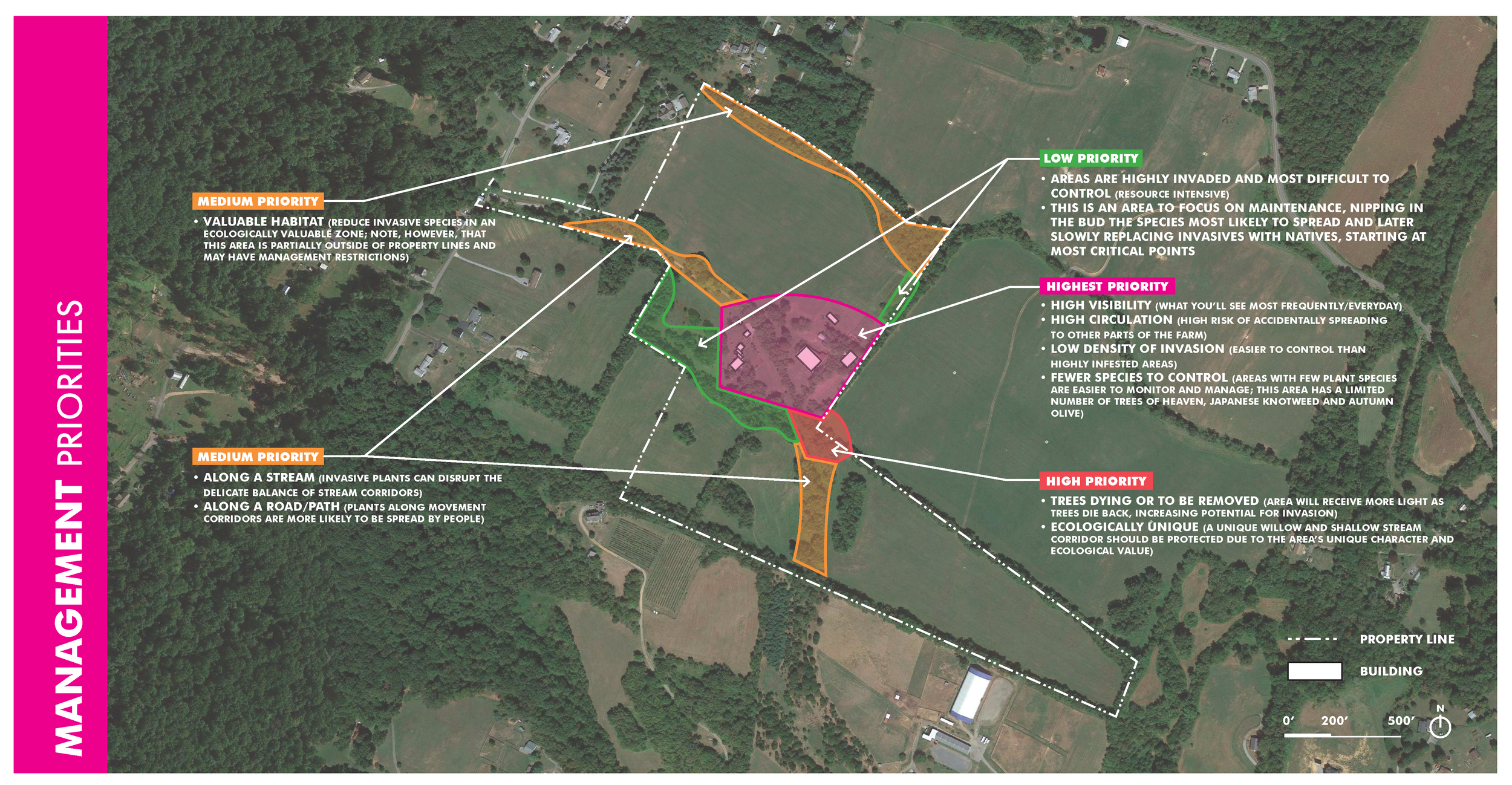
2. LEARNING ABOUT INVASIVE PLANTS
A deeper dive into specific invasive plant species found at Acknowledge Farms. A table provides a summary of information about the growing conditions the plant thrives in, how it spreads and what its impacts on the environment are. Individual plant profiles provide visual information for identification and locations of these species.
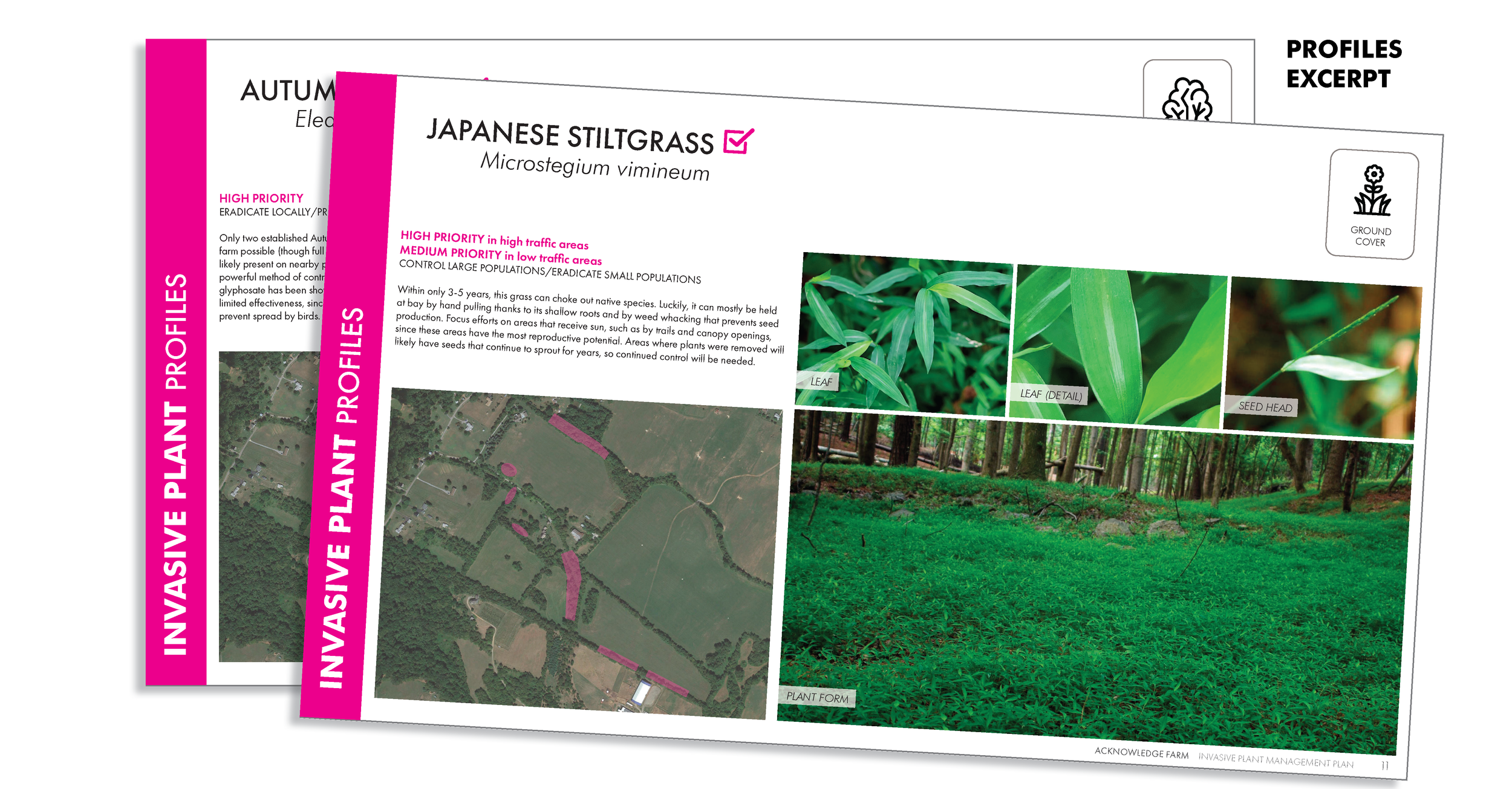

3. MANAGING INVASIVE PLANTS
Chemical and mechanical control methods to manage invasive plant species. A table showing how and when to manage plants provides key technical information for control.
4. INTRODUCING NATIVE COMMUNITIES
Recommendations for plant groupings to use at Acknowledge Farms once invasive plant management has begun (to stabilize managed areas and prevent future invasion). Plants listed are available as seeds or in the nursery trade.

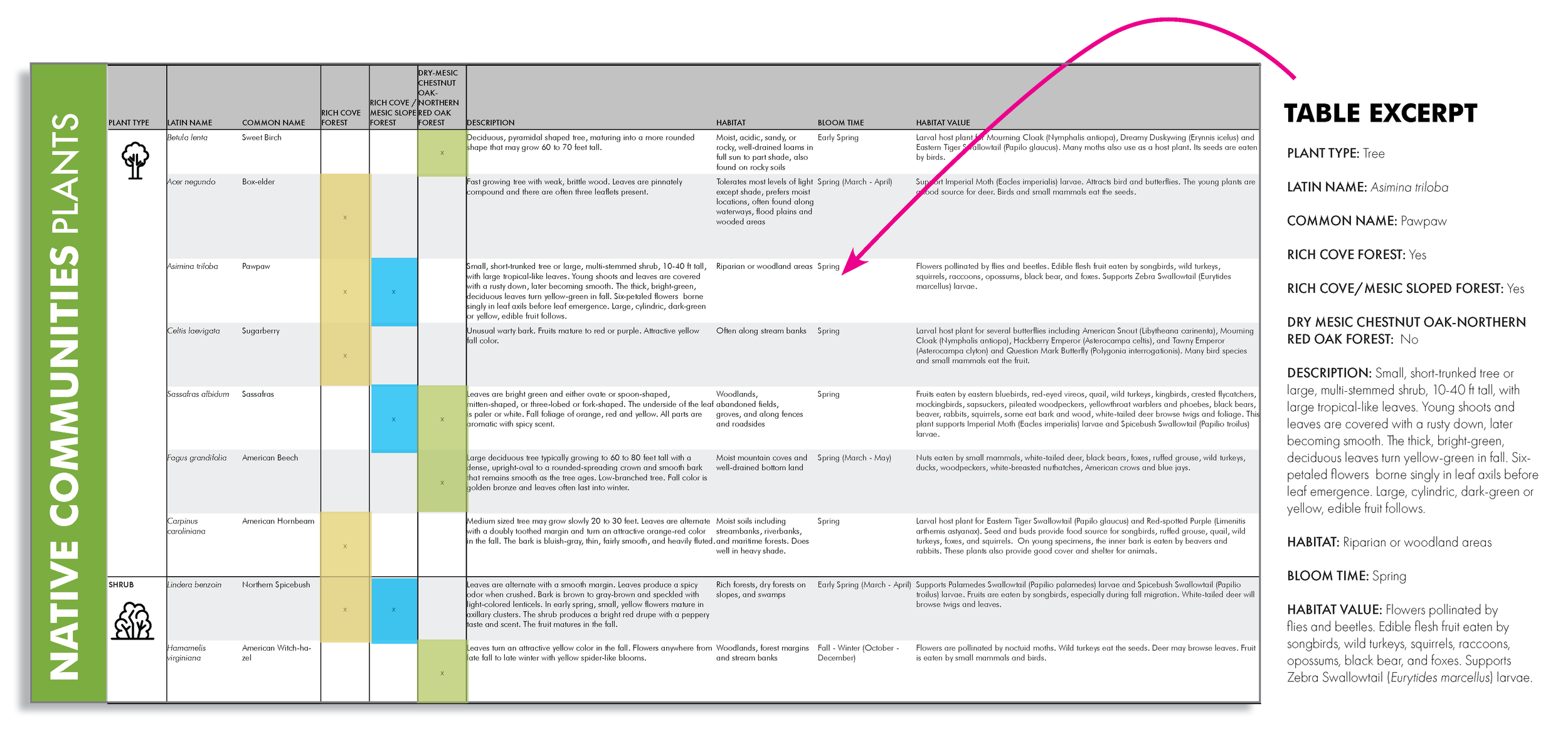
Looking forward.
Despite their often-deleterious impacts, the presence of invasive plant species has a silver lining: it invites us to pay attention to species, seasons and flows. By responding to plants in the right way, at the right time, and with the right tools and processes, we can protect or restore places so that their cultural meaning, individual identity and ecological value are preserved for generations to come.
The Acknowledge Farms Invasives Management Manual was selected for the 2025 Maryland ASLA Professional Design Awards for Analysis and Planning.
Project Team:
Joe Chambers, ASLA, SITES AP, is a Principal and Sustainability and Research Leader at MKSK.
Gaelle Gourmelon, MPH, is an Associate at MKSK.
Erin Schregardus is a Landscape Designer at MKSK.
